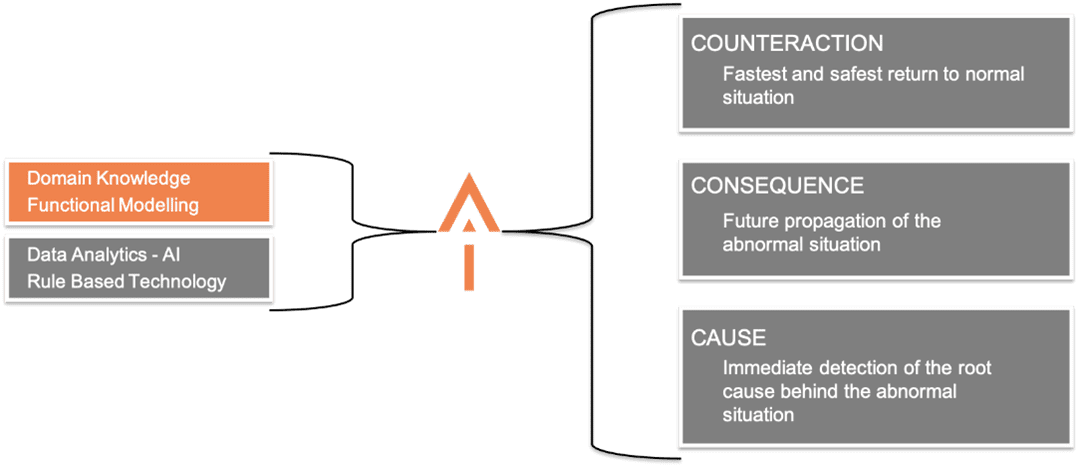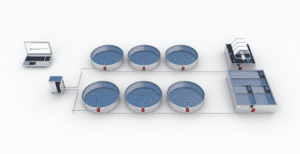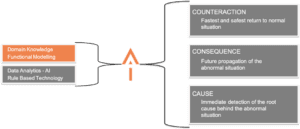
By Geirmund Vik for Hatchery Feed & Management Vol 12 Issue 1 2024
Recirculating Aquaculture Systems (RAS) have gained significant attention as a sustainable solution for intensive fish farming. Central to the success of RAS are monitoring and management systems that provide real time data on water quality, environmental conditions, and fish performance. This article reviews the role of these systems in RAS. We will also look into the opportunities artificial intelligence can offer highlighting their significance in ensuring optimal conditions for aquatic organisms, reducing environmental impact, and enhancing economic viability. Recirculating Aquaculture Systems (RAS) have emerged as a leading approach to address the growing global demand for seafood while minimizing the environmental footprint associated with traditional open aquaculture systems. A key component of RAS is advanced monitoring and management systems, which offer real-time insights into critical parameters.
Monitoring systems
Real-time monitoring Monitoring and management systems in RAS are equipped with various sensors that continuously collect data on essential parameters, such as water quality (e.g., pH, dissolved oxygen, ammonia, and nitrite levels), temperature, salinity, and more. These systems provide real-time data, enabling aquaculturists to respond swiftly to deviations from desired conditions.
Water quality control
Water quality is paramount in RAS. With precise monitoring, operators can maintain optimal conditions, reducing stress on aquatic organisms and enhancing growth rates. The control of parameters like oxygen levels and nitrogen compounds aids in the mitigation of diseases and mortalities, resulting in healthier fish populations.

Environmental sustainability
One of the most significant advantages of RAS is its reduced environmental impact. Monitoring systems ensure water is continually treated and recycled, minimizing water usage and waste discharge. This feature is crucial in regions facing water scarcity and contributes to a more sustainable approach to aquaculture.
Disease management
Early detection of diseases is essential in aquaculture. Monitoring systems, when integrated with disease monitoring tools, can detect subtle changes in water quality or fish behaviour that may indicate health issues. This early warning system allows prompt intervention and treatment, reducing losses and mitigating disease outbreaks.
Feed management
Efficient feed management is integral to RAS operations. Monitoring systems enable precise control over feed delivery, optimizing feed conversion rates and reducing both feed costs and the environmental impact of uneaten feed.
Economic efficiency
Optimized conditions provided by monitoring and management systems result in faster growth and uniformity among fish populations. Reduced mortality rates and increased yields lead to higher profits for aquaculture operations. Furthermore, the automation of tasks through these systems lowers labor costs and minimizes human errors.
Artificial intelligence
Artificial Intelligence (AI) has the potential to revolutionize Recirculating Aquaculture Systems (RAS) by enhancing monitoring, management, and decision making processes. Here are some key ways in which AI can be utilized in RAS

Real-time monitoring and control
AI can integrate with sensors and monitoring equipment to continuously collect and analyze data on water quality, temperature, oxygen levels, and other critical parameters. Machine learning algorithms can detect deviations from optimal conditions and trigger automated responses to maintain a stable environment for aquatic organisms. Predictive analytics AI can forecast water quality trends, disease outbreaks, and fish growth rates based on historical data and current conditions. These predictions help aquaculturists proactively address issues and optimize feeding and environmental control.
Disease detection and management
AI-powered image recognition and machine learning models can identify early signs of disease in fish by analyzing images of their appearance and behavior. This early detection allows for timely intervention, reducing losses and the need for antibiotics.
Feed management
AI algorithms can optimize feed delivery schedules based on the specific needs of the fish, reducing feed waste and minimizing the environmental impact. This precision in feeding can also lead to faster and more uniform fish growth.
Energy efficiency
AI can help manage energy consumption in RAS by optimizing equipment operation. For instance, AI algorithms can determine the most energy-efficient settings for pumps, filters, and aeration systems, reducing operational costs.
Automated water treatment
AI can control and optimize water treatment processes, such as biofilters and UV sterilizers. AI can adjust these systems based on real-time water quality data, improving treatment efficiency and reducing the risk of waterborne pathogens.
Environmental monitoring and regulatory compliance
AI can assist in the automated collection and reporting of environmental data for regulatory compliance. It can help maintain records of water quality parameters and other environmental factors, streamlining the reporting process.
Data management and analysis
AI can process vast amounts of data quickly and accurately, providing insights into historical trends and patterns. This can help aquaculturists make informed decisions about system design, operation, and optimization.
Remote monitoring and management
AI enables remote monitoring and management of RAS facilities, allowing operators to control systems and receive alerts from anywhere. This is especially valuable for large-scale or geographically dispersed aquaculture operations.
Genetic selection and breeding
AI can assist in genetic selection and breeding programs by analyzing genetic data to identify traits that lead to improved fish performance, disease resistance, or growth rates.
Robotic and autonomous systems
AI-driven robots and autonomous vehicles can be employed for tasks such as fish counting, feeding, and waste removal within RAS facilities, reducing labor costs and increasing efficiency.
Aquatic ecology modeling
AI can be used to create ecological models that simulate the interactions of fish, bacteria, and algae in the RAS environment. This can aid in understanding and predicting system behavior and optimizing conditions.
Optimized rearing strategies
AI can recommend specific rearing strategies based on the species being cultivated, environmental conditions, and market demands, resulting in efficient and sustainable production.
Challenges and future directions
Despite the numerous advantages, AI, monitoring and management systems, RAS faces challenges related to initial investment costs, maintenance, and accessibility, particularly for small-scale farmers. Collaboration between technology companies, research institutions, and the aquaculture industry is essential to overcome these barriers and make advanced systems more accessible to all. While AI holds significant promise for RAS, it’s essential to address data privacy, security, and ethical concerns. Additionally, the accessibility and affordability of AI technology needs to be considered to ensure that both large and small-scale aquaculture operations can benefit from these advancements. Collaborations between AI developers, aquaculture experts, and regulatory bodies are essential for the responsible and effective implementation of AI in RAS.
Conclusion
Monitoring and management systems are at the heart of the success of Recirculating Aquaculture Systems (RAS). These systems provide real-time data on crucial parameters, enabling aquaculturists to maintain optimal conditions for aquatic organisms, reduce environmental impact, and enhance economic efficiency. Artificial Intelligence will be a powerful tool in addition to monitoring and management. As the aquaculture industry continues to expand, the continued development and integration of these advanced systems are critical for achieving long term sustainability and meeting the global demand for seafood
The article can also be read here : https://issuu.com/aquafeed.com/docs/hatchery_vol_12_issue_1_2024/46